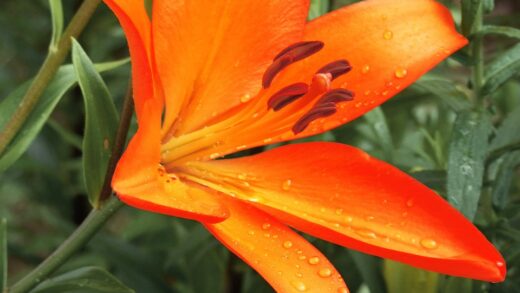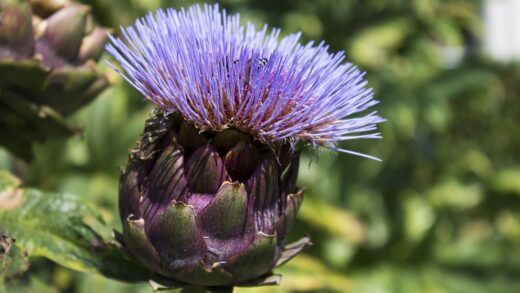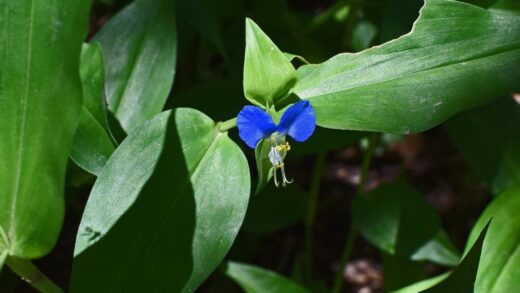Understanding the water requirements of the sloe is to understand a plant forged by resilience and adaptation. In its natural habitat, the sloe is a survivor, capable of thriving in conditions that would cause more delicate species to falter. Its deep and extensive root system is adept at seeking out moisture, making it remarkably drought-tolerant once it has become established. This inherent toughness means that for most of its life in a garden setting, a mature sloe will require little to no supplemental irrigation, happily subsisting on natural rainfall. However, this self-sufficiency is not immediate; the period following planting is a critical time when the plant’s future resilience is built upon a foundation of adequate and consistent moisture provided by the gardener.
The most crucial phase for irrigation is the first one to two years after planting. During this establishment period, the sloe is entirely dependent on the moisture within its immediate root ball and the surrounding soil. It has not yet had the time to send its roots deep and wide in search of water. Therefore, regular watering is essential to prevent drought stress, which can severely stunt its growth or even prove fatal. The goal is to keep the soil consistently moist but never waterlogged, a balance that encourages strong root development and sets the stage for the plant’s future independence from the garden hose.
Once the sloe is mature and well-established, its water needs decrease dramatically. A plant that has been in the ground for several years will have developed the robust root system characteristic of the species, enabling it to endure normal summer dry spells without any intervention. Supplemental watering for a mature plant is only necessary during periods of extreme or prolonged drought, the kind where the ground becomes deeply cracked and other, less hardy plants are showing severe signs of stress. In most temperate climates, this is a rare occurrence.
Recognizing the signs of both under-watering and over-watering is a key skill in managing the sloe’s irrigation needs correctly. A thirsty sloe will exhibit wilting or drooping leaves, which may also turn yellow or brown and drop prematurely. Conversely, a plant suffering from too much water, often due to poor drainage, will also show yellowing leaves. The critical difference is that the soil around an over-watered plant will be constantly soggy, and the plant may show signs of root rot at its base. Proper irrigation is therefore a story of two distinct phases: attentive care in its youth, followed by a respectful, hands-off approach in its maturity.
Water needs during establishment
The first year is undeniably the most critical period for watering a new sloe plant. Upon planting, the root system is confined to the original root ball and the immediately surrounding soil. It is therefore vital to ensure this area does not dry out while the roots begin to venture into their new environment. The key to successful establishment watering is to be consistent and to water deeply. A light sprinkling on the surface does little good, as it encourages shallow rooting; instead, you want to provide a thorough soaking that penetrates deep into the soil profile, encouraging the roots to grow downwards in search of moisture.
More articles on this topic
A practical watering schedule for the first growing season would be to provide a deep watering once a week, especially from late spring through to early autumn. This frequency should be adjusted based on weather conditions. During a cool, rainy week, you may not need to water at all. Conversely, during a hot, dry, windy spell, you might need to increase the frequency to twice a week. The best way to check is to feel the soil a few inches below the surface near the plant’s base. If it feels dry to the touch, it is time to water.
The amount of water provided during each session is just as important as the frequency. For a newly planted shrub, you should aim to deliver around 10 to 15 litres of water each time. The best method is to apply the water slowly, allowing it to soak in rather than run off the surface. A watering can with a rose attachment or a hosepipe set to a gentle trickle and left at the base of the plant for several minutes are both effective techniques. This ensures the water reaches the entire root zone and helps to settle the soil, eliminating air pockets.
This attentive watering regime should continue throughout the first full growing season. In the second year, the plant will have started to become more self-sufficient, but it is still wise to provide supplemental water during any prolonged dry periods. By the third year, the sloe should be fully established and, in most climates, will no longer require regular irrigation. This initial investment of care in watering is crucial for building the plant’s resilience for the decades to come.
Signs of water stress
Being able to recognize the signs of water stress, both too little and too much, is essential for maintaining the health of your sloe, particularly when it is young. Under-watering is the more common issue for newly planted shrubs. The most obvious initial symptom is wilting. The leaves will lose their turgidity and begin to droop, especially during the hottest part of the day. If the lack of water continues, the edges of the leaves may turn brown and crispy, and in severe cases, the plant will start to shed leaves prematurely to conserve moisture.
More articles on this topic
Another sign of drought stress is a general lack of vigor. A well-watered young plant should be actively producing new shoots and leaves during the growing season. If your sloe appears stunted and is not putting on new growth, insufficient water could be the cause. The soil itself is the clearest indicator; if the ground around the plant is dry and cracked, it is a definitive sign that irrigation is needed. For young plants, this level of dryness can be detrimental to the developing root system.
Paradoxically, some symptoms of over-watering can mimic those of under-watering, which can be confusing. The primary sign of too much water is the yellowing of leaves, a condition known as chlorosis, which can also occur with drought. However, with over-watering, the leaves often feel soft and limp rather than dry and crispy, and they may fall from the plant while still green or yellow. The plant’s growth will also be stunted, and in advanced cases, you might notice a foul smell from the soil, indicating that the roots are beginning to rot in the anaerobic, waterlogged conditions.
The definitive way to distinguish between the two problems is to examine the soil. Dig down a few inches away from the base of the plant. If the soil is consistently soggy, muddy, or has standing water, over-watering or poor drainage is the culprit. No amount of additional watering will help; the solution lies in improving the site’s drainage or reducing the frequency of irrigation. A healthy sloe requires soil that is moist, not saturated. Correctly diagnosing the problem is the first step to remedying it and restoring the plant’s health.
Irrigation for mature plants
Once a sloe shrub has been in the ground for three or more years and is showing healthy, vigorous growth, it is considered well-established. At this point, its water requirements change dramatically. The plant will have developed a deep and extensive root network that is highly efficient at extracting moisture from a large volume of soil. This makes it exceptionally resilient to the typical dry spells experienced during a normal summer in a temperate climate. For the majority of the year, natural rainfall will be more than sufficient to meet its needs.
Under normal circumstances, you should not need to provide any supplemental water to a mature sloe. Unnecessary watering can be counterproductive, potentially leading to weaker growth and discouraging the roots from maintaining their deep-seeking nature. It can also create artificially damp conditions around the base of the plant, which may increase the risk of fungal diseases. A hands-off approach is the best policy for mature specimens, trusting in the plant’s natural adaptations to see it through periods without rain.
The exception to this rule is in the case of a severe and prolonged drought. This would be a period of many weeks or even months with little to no rainfall, combined with high temperatures, where the soil dries out to a significant depth. In such extreme conditions, even a drought-tolerant plant like the sloe can begin to suffer. You might notice signs of stress such as leaf drop, wilting that persists even in the cool of the morning, or a poor fruit crop that shrivels on the branches.
If you do need to water a mature sloe during an extreme drought, the principle of deep watering remains paramount. A single, very deep soaking is far more beneficial than several light sprinklings. The goal is to replenish the moisture deep in the soil profile where the main roots are located. Use a soaker hose or a regular hose on a slow trickle, leaving it to run for several hours to deliver a substantial volume of water to the entire root zone, which extends out to the edge of the plant’s canopy and beyond. One such watering may be all that is needed to see the plant through the remainder of the dry spell.
The role of mulch in moisture retention
Mulching is one of the most effective techniques a gardener can use to manage soil moisture and support the health of a sloe plant, both during its establishment phase and throughout its life. A layer of organic mulch, such as wood chips, composted bark, leaf mould, or well-rotted compost, applied to the soil surface around the base of the shrub offers multiple benefits. Its primary function in the context of watering is to reduce the rate of evaporation of moisture from the soil. The mulch acts as a physical barrier, shielding the soil from the drying effects of the sun and wind.
This reduction in evaporation means that the soil remains moist for much longer after rainfall or irrigation. For a young plant, this creates a more stable and forgiving environment for its developing roots, buffering it against rapid drying and reducing the overall frequency with which you need to provide supplemental water. This consistent moisture level is crucial for preventing the kind of stress that can hinder a young plant’s growth. The effort of applying mulch in the spring is repaid many times over in water saved and a healthier, more resilient plant.
To be effective, the mulch should be applied in a reasonably thick layer, typically around 5 to 10 centimeters deep. It should be spread out over the entire root zone of the plant, extending from near the base out to the dripline (the edge of the canopy). It is important, however, to leave a small, mulch-free gap directly around the main stem of the sloe. Piling mulch up against the stem can trap too much moisture, creating damp conditions that may lead to bark rot and other diseases.
Beyond moisture conservation, organic mulches provide a host of other benefits that contribute to the plant’s ability to manage water. As the mulch slowly decomposes, it improves the structure of the soil. In heavy clay soils, it helps to create better drainage and aeration, while in sandy soils, it improves water-holding capacity. This decomposition also releases a steady supply of nutrients, supporting overall plant health. A healthy, well-nourished plant with a strong root system in well-structured soil is inherently better equipped to handle periods of drought, making mulching a cornerstone of effective water management for the sloe.


















